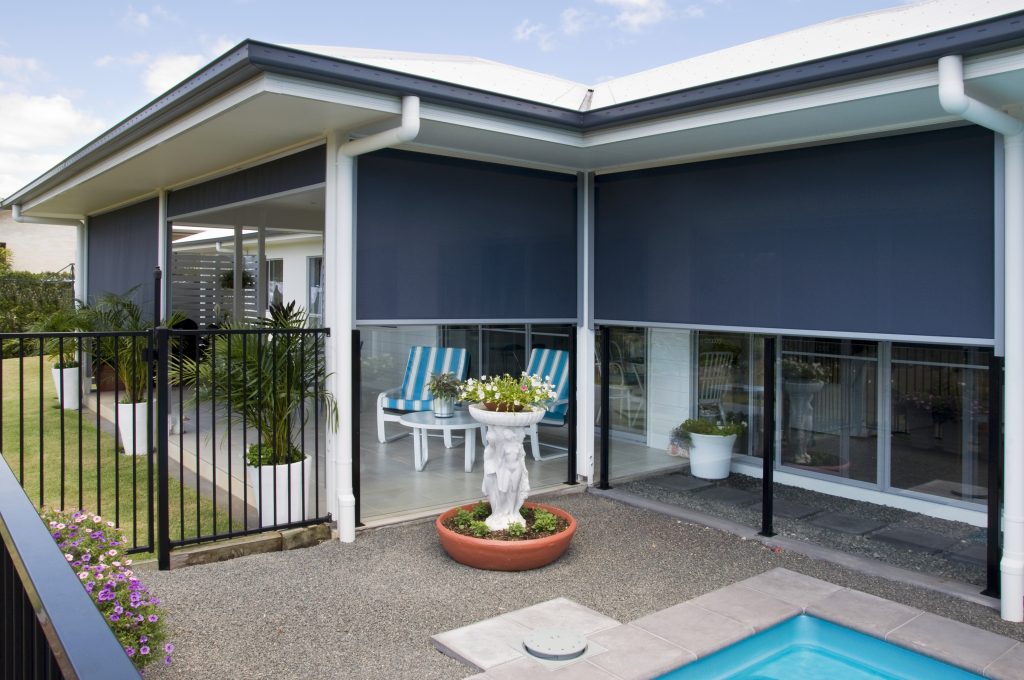
Awnings are more than just practical additions to your home—they are architectural features that can enhance curb appeal, provide comfort, and define your outdoor living space. But choosing the right awning involves more than simply picking a functional shade. To truly elevate the look of your home, your awnings should complement your exterior aesthetics in both style and color. Here’s how to make the right design decisions that balance form and function.
1. Coordinate with Your Home’s Color Palette
Start by examining your home’s existing exterior color scheme. This includes the roof, siding, or wall color, trims, doors, and window frames. Choose awning fabrics that either complement or contrast tastefully with these elements. For example:
- If your home features neutral tones like white, beige, or grey, a bold awning in navy, forest green, or terracotta can add striking visual interest.
- For homes with warmer hues—like sandstone, cream, or olive—a muted green or striped pattern may blend beautifully without overpowering the overall look.
Avoid colors that clash with your exterior paint, as this can distract from the home’s architectural harmony.
2. Match Awning Style with Home Architecture
Your home’s architectural style should guide your awning selection. A mismatched awning can look out of place and diminish your home’s visual appeal. Consider the following pairings:
- Modern or Contemporary Homes: Sleek, minimalist awnings in neutral colors with clean lines or motorised retractable options work well.
- Traditional or Heritage Homes: Classic scalloped valances, rich striped patterns, and fixed awnings in complementary tones can enhance charm.
- Coastal or Hamptons-Inspired Homes: Go for light, airy colors like white, light blue, or soft greys with canvas or fabric awnings to reflect a breezy, beachy vibe.
Take cues from the architectural details—roof pitch, windows, railings, and trims—to ensure your awnings align seamlessly with the home’s overall design.
3. Consider Fabric Texture and Pattern
Beyond color, the texture and pattern of your awning fabric can influence the design. Stripes can evoke a timeless feel, particularly in coastal or traditional settings. Solid colors tend to be more modern and subtle, great for contemporary homes. Some homeowners opt for textured canvas or weather-resistant materials that mimic natural fabrics for a softer, more organic look.
If your home’s exterior is already busy with patterns—such as brickwork or stone cladding—opt for simpler awning designs to avoid visual clutter.
4. Frame Finish Matters
While fabric is important, don’t overlook the structure itself. The finish of your awning’s frame should either match or complement existing exterior elements like window frames, fences, or gutters. Popular choices include powder-coated aluminum in black, white, or metallic tones. A clean frame finish ensures that even when the awning is retracted, it looks intentional and cohesive with your exterior.
5. Think About Functionality and Placement
Where you install your awning will also affect how it ties into your home’s design. For example:
- Over patios or decks: Consider wide-span retractable awnings that feel integrated with the outdoor entertaining space.
- Above windows: Smaller, fixed awnings or angled shades can create uniformity if installed across multiple windows on the same wall.
Ensure that the placement doesn’t obstruct architectural features like decorative cornices, window trims, or lighting.
6. Balance Shade with Light
While awnings are meant to provide shade, choosing darker tones can significantly reduce natural light inside the home. If you have smaller windows or darker interior spaces, consider lighter-colored awnings that still offer UV protection but reflect more sunlight.
Final Thought
If you choose your awning with care, it can be a fashion statement that makes the outside of your home look better and save you money on energy costs. Using the same cloth, style, and color throughout your home’s architecture can help you make an outdoor addition that looks like it was always there. Your awnings should show off and enhance the unique character of your home, whether you’re going for luxury, coastal charm, or modern flair.